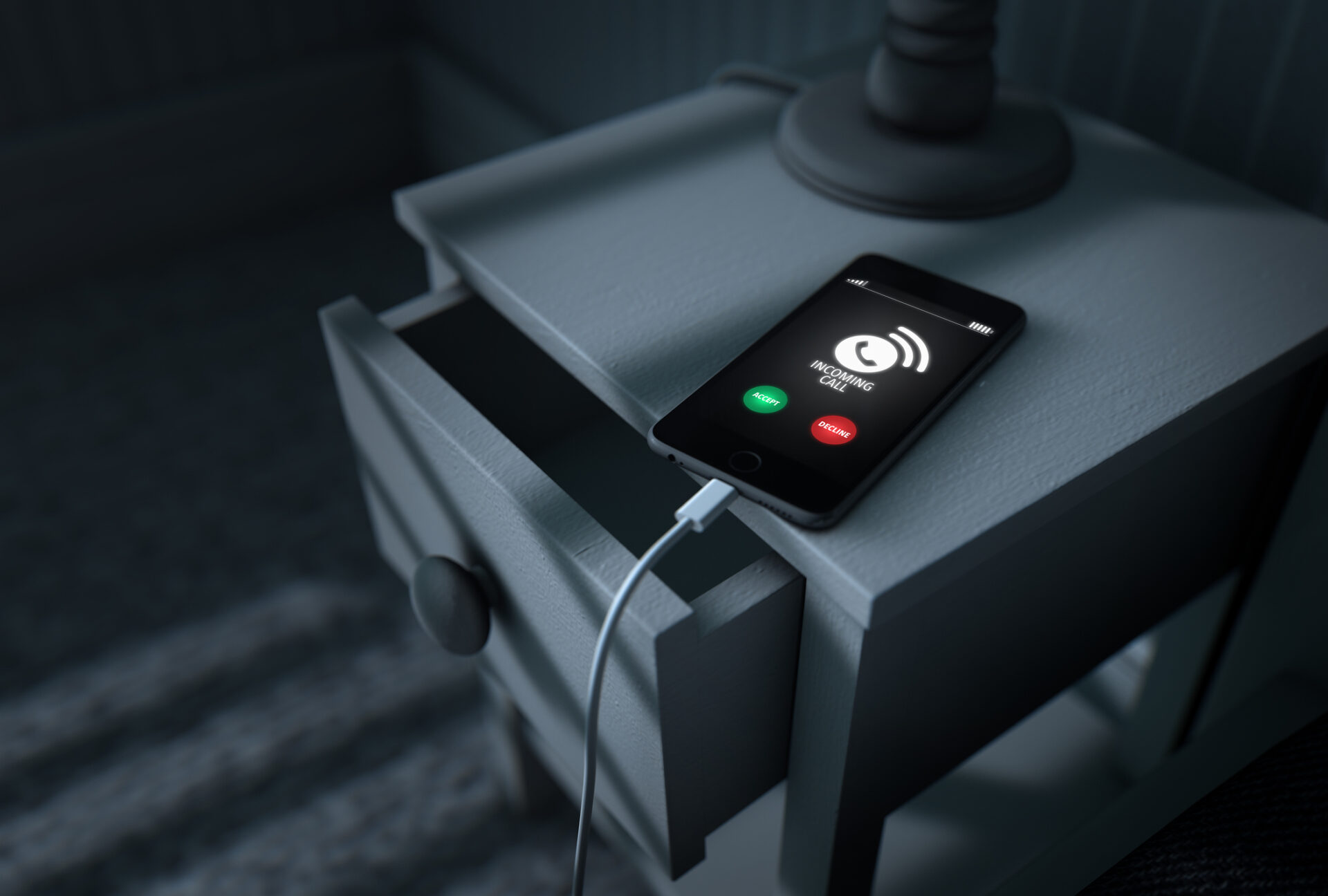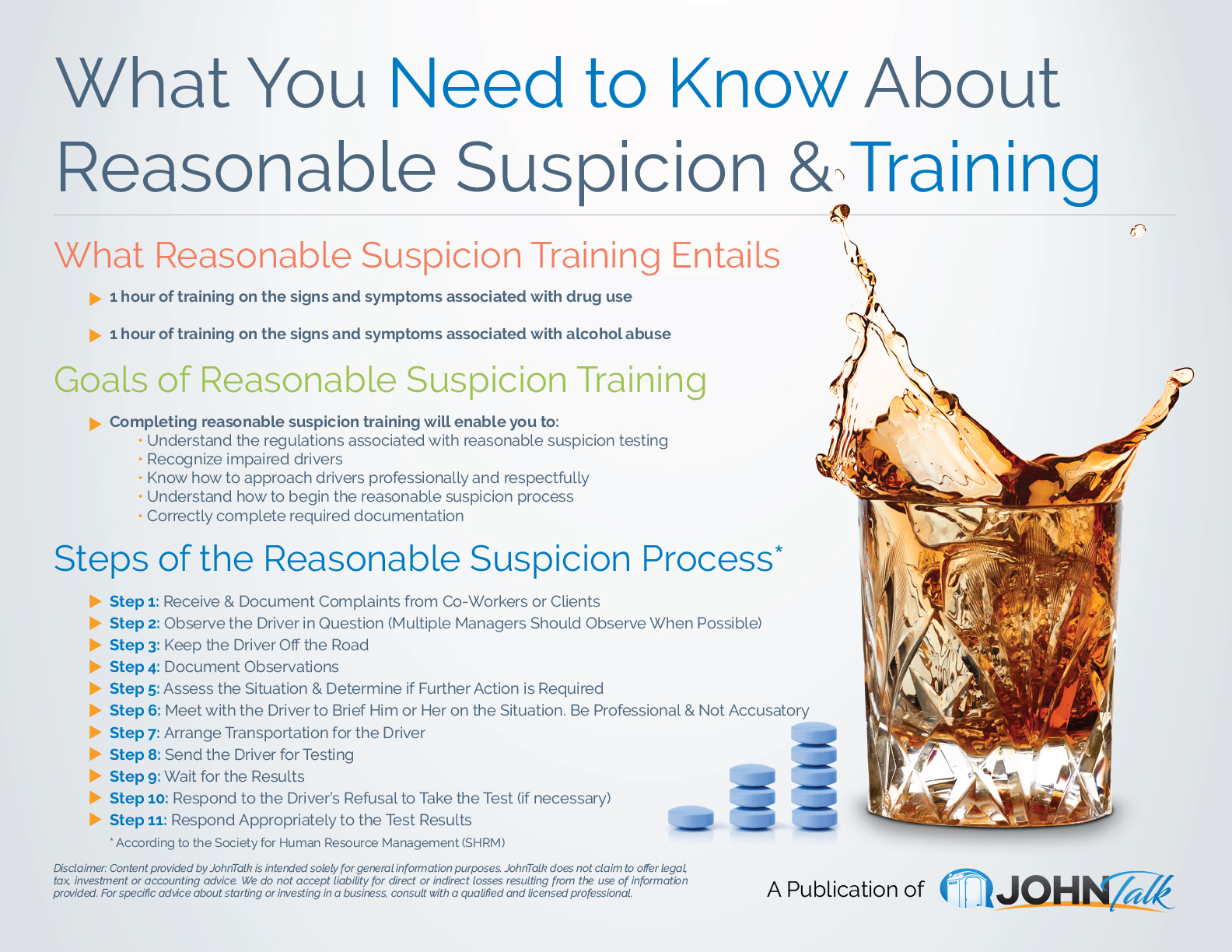
It’s a Bird, It’s a Plane, It’s a… Porta-Potty?
June 25, 2018
How to Handle Off-Hour Calls
July 2, 2018According to Section 382.603 of the Federal Motor Carrier Safety Administration (FMCSA), all individuals who supervise drivers must receive Reasonable Suspicion Training. This training is to equip supervisors with the necessary knowledge to recognize drivers showing signs of impairment by drugs or alcohol and take appropriate steps to get them tested. This is a big responsibility because missing the warning signs and letting an impaired driver on the road could leave the business liable if they cause property damage, personal injury or death. For a look at what is involved with reasonable suspicion and the training, check out this infographic:

Like this infographic? Share it with your friends and colleagues!
Get the JohnTalk “ALL-ACCESS PASS” & become a member for FREE!
Benefits Include: Subscription to JohnTalk Digital & Print Newsletters • JohnTalk Vault In-Depth Content • Full Access to the JohnTalk Classifieds & Ask a PRO Forum
Looking to Take Your Portable Restroom Business to the NEXT LEVEL? Download our FREE Guide: “Your Guide to Operating A Portable Restroom Business.”
Thinking About GETTING INTO the Portable Restroom Industry? Download our FREE Guide: “Your Guide to Starting A Portable Restroom Business.”
What You Need to Know About Reasonable Suspicion & Training
What Reasonable Suspicion Training Entails
- 1 hour of training on the signs and symptoms associated with drug use
- 1 hour of training on the signs and symptoms associated with alcohol abuse
Goals of Reasonable Suspicion Training
Completing reasonable suspicion training will enable you to:
- Understand the regulations associated with reasonable suspicion testing
- Recognize impaired drivers
- Know how to approach drivers professionally and respectfully
- Understand how to begin the reasonable suspicion process
- Correctly complete required documentation
Steps of the Reasonable Suspicion Process*
Step 1: Receive & Document Complaints from Co-Workers or Clients
Step 2: Observe the Driver in Question (Multiple Managers Should Observe When Possible)
Step 3: Keep the Driver Off the Road
Step 4: Document Observations
Step 5: Assess the Situation & Determine if Further Action is Required
Step 6: Meet with the Driver to Brief Him or Her on the Situation. Be Professional & Not Accusatory
Step 7: Arrange Transportation for the Driver
Step 8: Send the Driver for Testing
Step 9: Wait for the Results
Step 10: Respond to the Driver’s Refusal to Take the Test (if necessary)
Step 11: Respond Appropriately to the Test Results
* According to the Society for Human Resource Management (SHRM)





